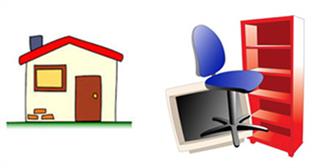
From the previous article, you know you can claim current expenses on your rental property. There is another type of expense – capital expenses.
Capital expenses provide benefits that usually last for several years. For example, buying a new fridge, renovating the basement, and installing a new furnace are capital expenses in your rental property. You cannot deduct the full amount of the cost in the year you pay for them. Instead, you can deduct their cost over a period of several years as capital cost allowance (CCA).
Capital expenses can include:
- the purchase price of rental property;,/li>
- legal fees and other costs connected with buying the property; and
- the cost of furniture and equipment you are renting with the property.
To decide whether an amount is a current expense or a capital expense, you should consider your answers to the following questions:
1. Does the expense provide a lasting benefit?
A capital expense generally gives a lasting benefit. For example, the cost of putting vinyl siding on the exterior walls of a wooden house is a capital expense.
A current expense usually recurs after a short period. For example, the cost of painting the exterior of a wooden house is a current expense.
2. Does the expense maintain or improve the property?
An expense that improves a property beyond its original condition is probably a capital expense. If you replace wooden steps with concrete steps, the cost is a capital expense.
An expense that simply restores a property to its original condition is usually a current expense. For example, the cost of repairing wooden steps is a current expense.
3. Is the expense for a part of a property or for a separate asset?
The cost of replacing a separate asset within a property is a capital expense. For example, the cost of buying a refrigerator to use in your rental property is a capital expense. This is because a refrigerator is a separate asset and is not part of the building.
The cost of repairing a property by replacing one of its parts is usually a current expense. For instance, electrical wiring is part of a building. Therefore, an amount you spend to rewire is usually a current expense, as long as the rewiring does not improve the property beyond its original condition.
4. What is the value of the expense?
Use this test only if you cannot determine whether an expense is capital or current by considering the three previous tests.
Generally, if the cost is considerable in relation to the value of the property, it is a capital expense. This test is not a determining factor by itself. You might spend a large amount of money for maintenance and repairs to your property all at once. If this cost was for ordinary maintenance that was not done when it was necessary, it is a maintenance expense, and you deduct it as a current expense.
Capital expenses – Special situations
1. Buying an older building
If you buy an older building that you have to repair or renovate to make it suitable to rent, the cost of the work is a capital expense. This is the case even though you would usually treat these costs as current expenses.
2. Selling your property
If you make repairs to your property because you want to sell it, or you make the repairs as a condition of sale, the repairs are capital expenses. However, CRA considers the repairs to be current expenses if they were necessary and you made them to your property or were making them before you decided to sell.
If you need more information about capital expenses, please check CRA website Capital Cost Allowance –Depreciable Property.
